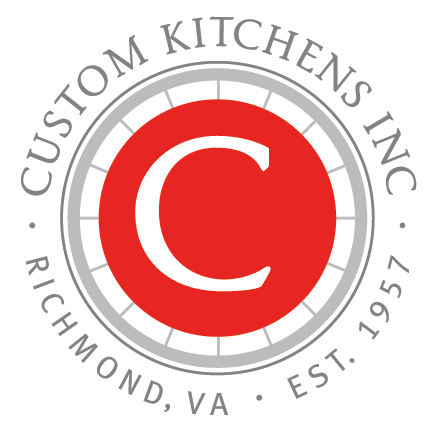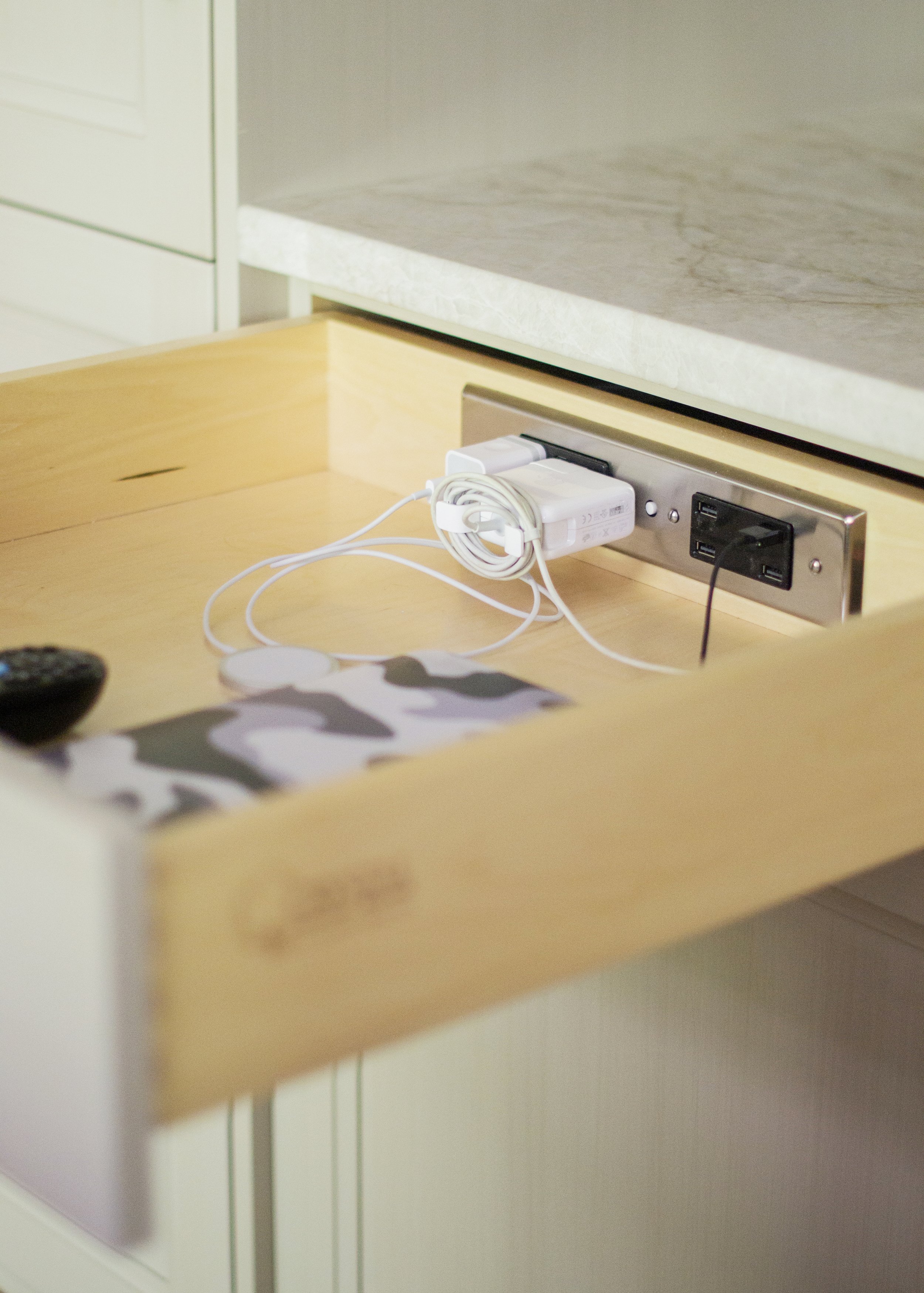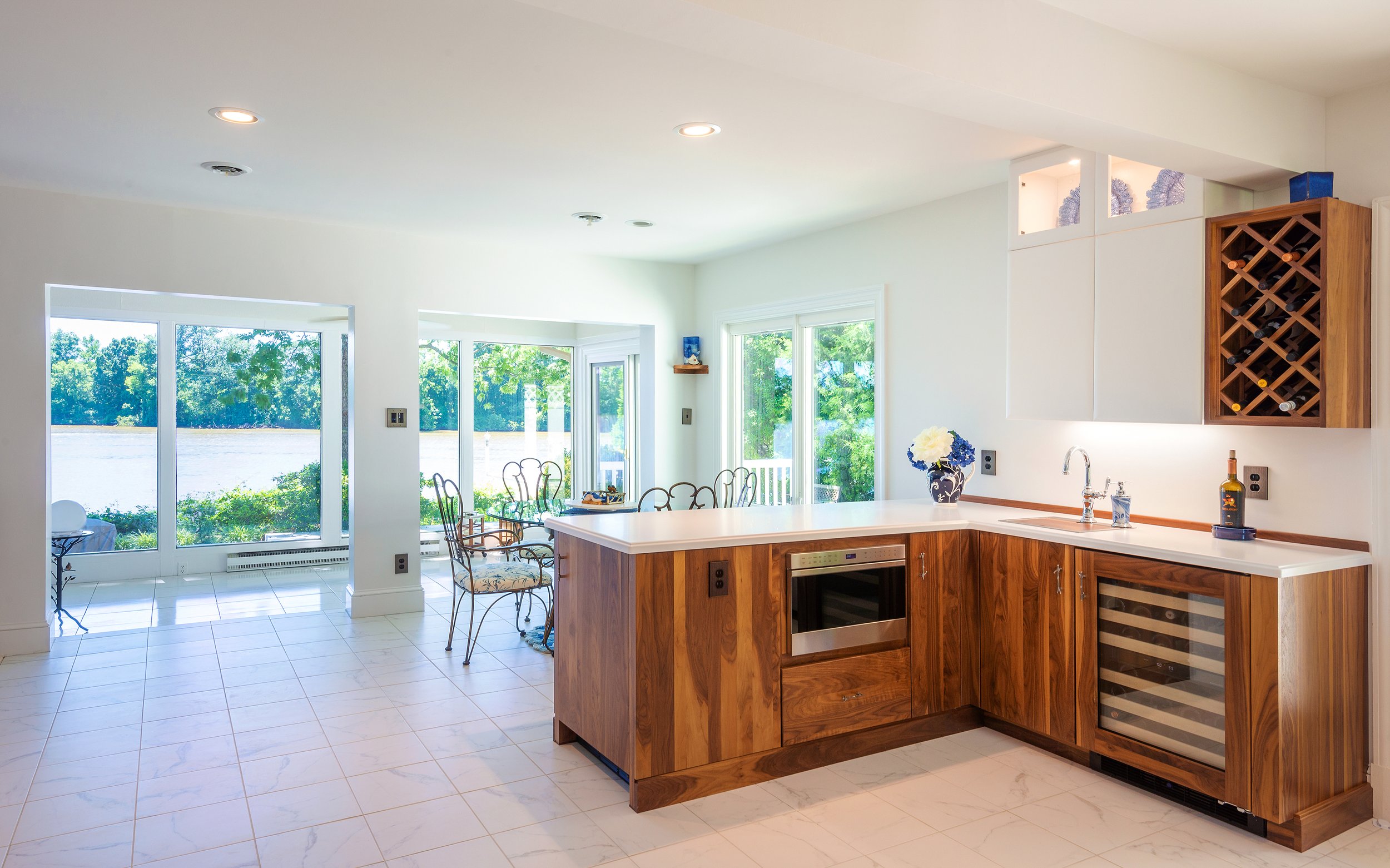The Devil Is In The Details
Professional designers understand and recognize that the smallest of things can have a huge impact on how owners approach creating their ideal kitchen. This is one of the reasons that our clients trust our team of designers to guide them through the re-imagining of their kitchen.
Every kitchen needs electrical outlets, however, it is important to understand that outlets can make or break the look and feel of a kitchen. Imagine a beautiful colored glass backsplash that is interrupted by a white outlet cover. Not only should outlet covers match the color of your backsplash, but also their orientation should complement the aesthetic you want to achieve. There are certain backsplash designs where an outlet, regardless of size and shape, just does not work. In those cases, we often recommend installing plug molding underneath cabinets or pop-up outlets that can be hidden in a countertop.
Many homeowners want small appliances, such as a toaster or coffee maker, to be permanent fixtures on their countertops. We always ask our clients how they plan to use their kitchen, the small appliances that will be ever-present and other items that will be within arm’s reach daily. This enables us to place electrical outlets directly behind the appliance to avoid cords hanging all over the place.
In-drawer and in-cabinet docking stations where smart phones and tablets can be recharged out of sight are additional tools to create a clean and uncluttered look in a new kitchen.
Knowing how a kitchen will be used and how often, is essential to creating a design that resonates with the client. However, looks are not what it is all about, functionality is fundamental to a working kitchen. Meal preparation is one of the main activities that happen in the kitchen which is why task lighting is so important. Undercabinet lighting is a common feature in new kitchens, but the key is where that lighting is positioned. If undercabinet lighting is to assist in meal preparation, the lighting should be installed toward the front of the cabinet. If the lighting is designed to highlight the backsplash then the lighting should be installed toward the back of the cabinet.
In-cabinet and in-drawer lighting are other details that help make a kitchen function more efficiently and create a wow factor. Many cabinet manufacturers offer in-cabinet or in-drawer lighting as an option and if not, it’s easy to specify LED strips to illuminate interior spaces.
Many homeowners prefer stainless steel appliances. Although they may look great, they do not always match the design aesthetic that the owner wants to achieve. In those cases, we often recommend paneling the appliances.
Finally, the placement and quantity of sinks can affect the functionality and look of a new kitchen. Designers often suggest a sink on an island. The location of the sink in an island also affects how the space is used. For smaller islands, less than eight feet in length, the solution is often placing the sink at the end of the island to maximize prep and eating areas.
There are hundreds of details that must be considered when designing a new kitchen that is influenced by how often a kitchen will be used and for what purposes. In today’s hybrid work environment, kitchens have taken on new roles beyond places to prepare and eat meals.






